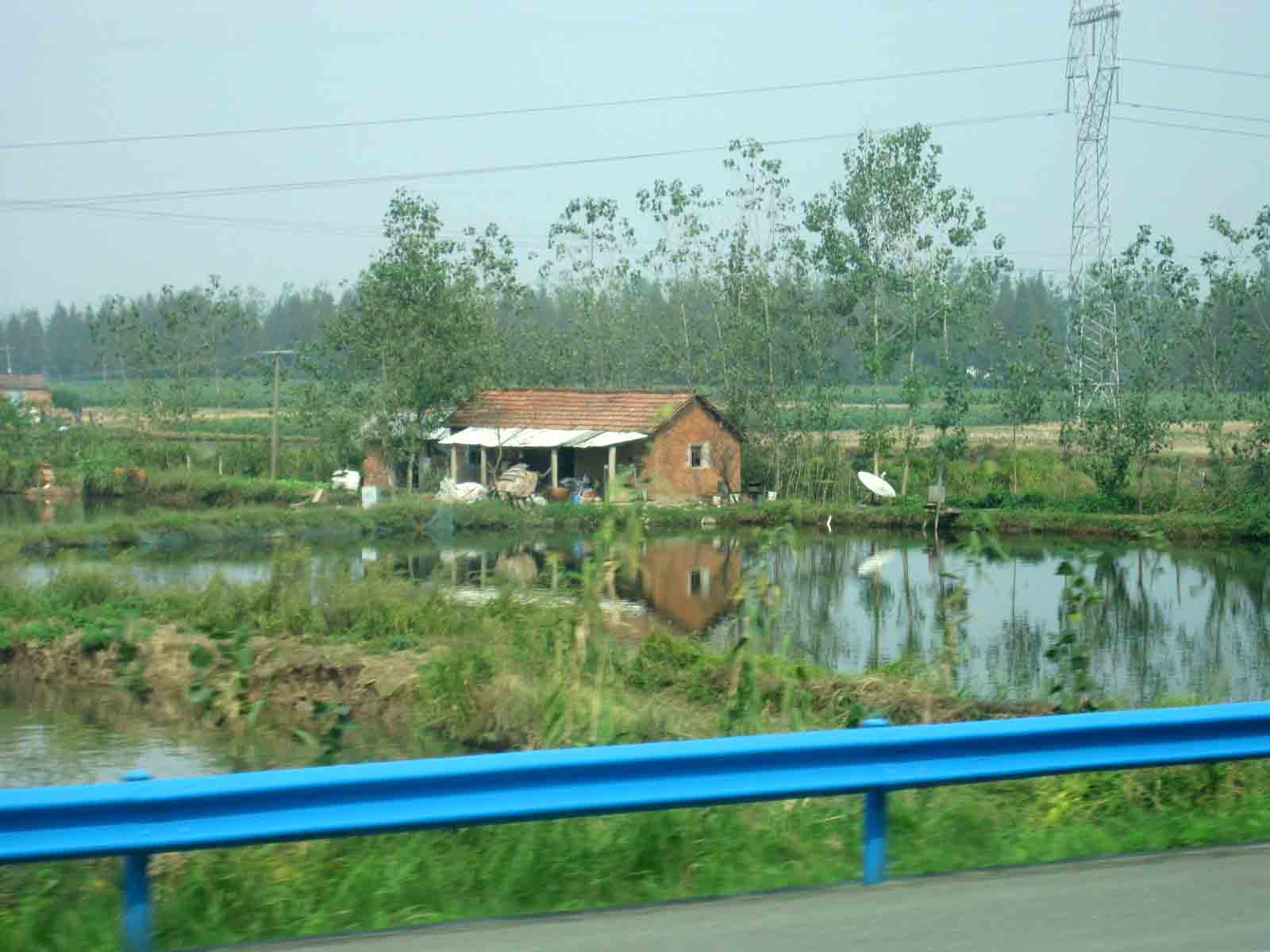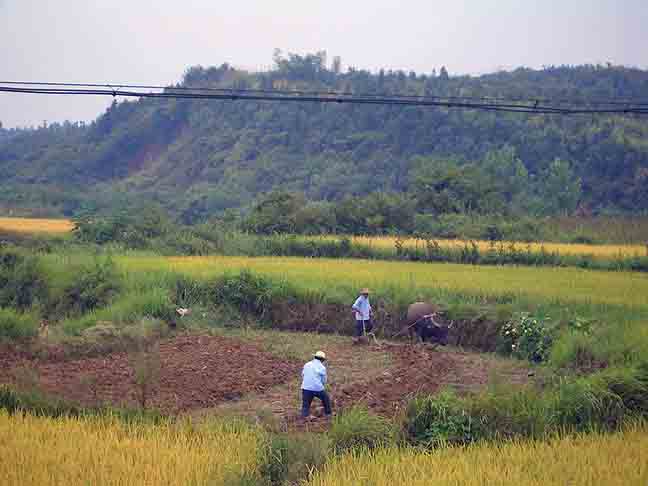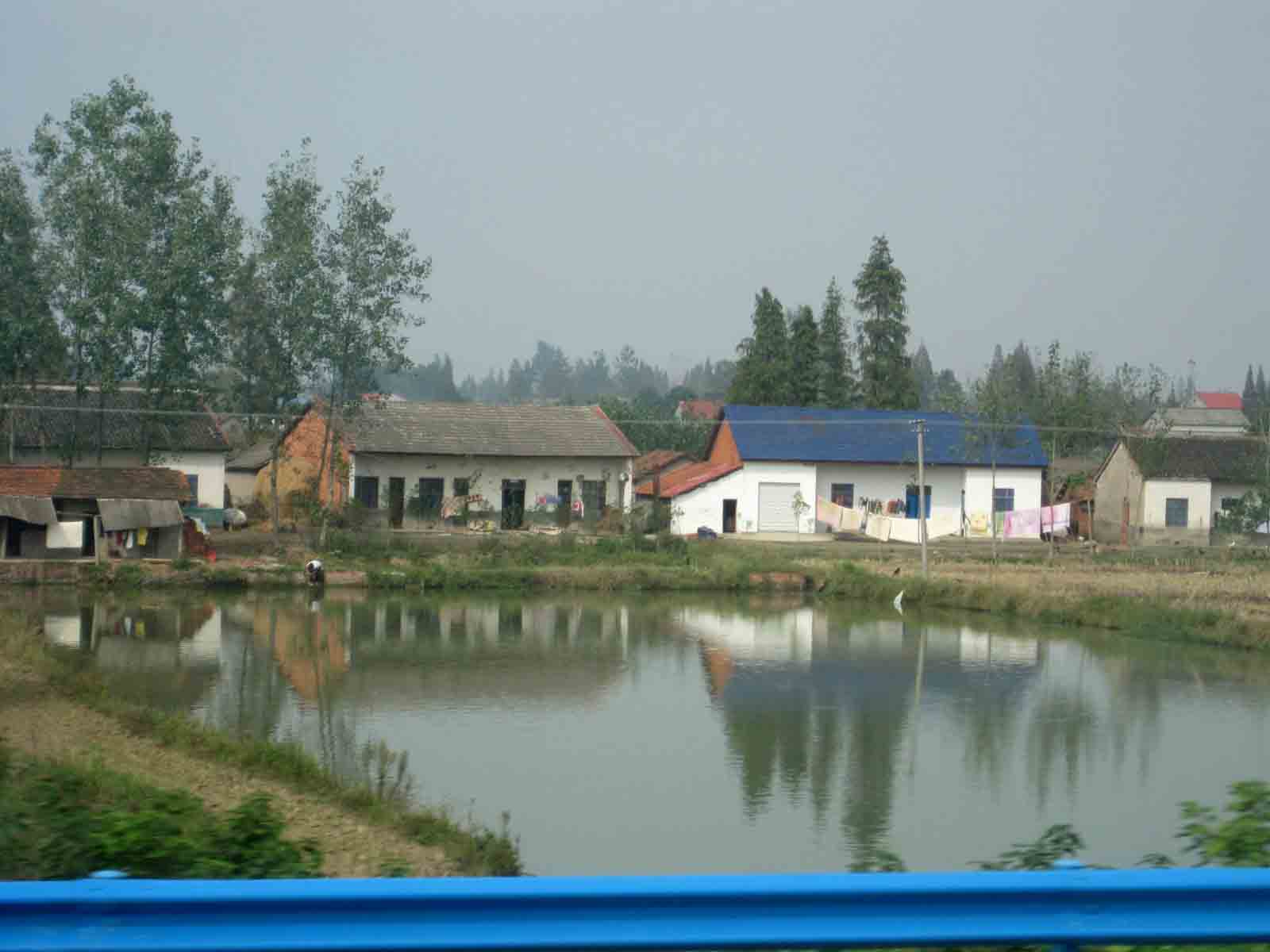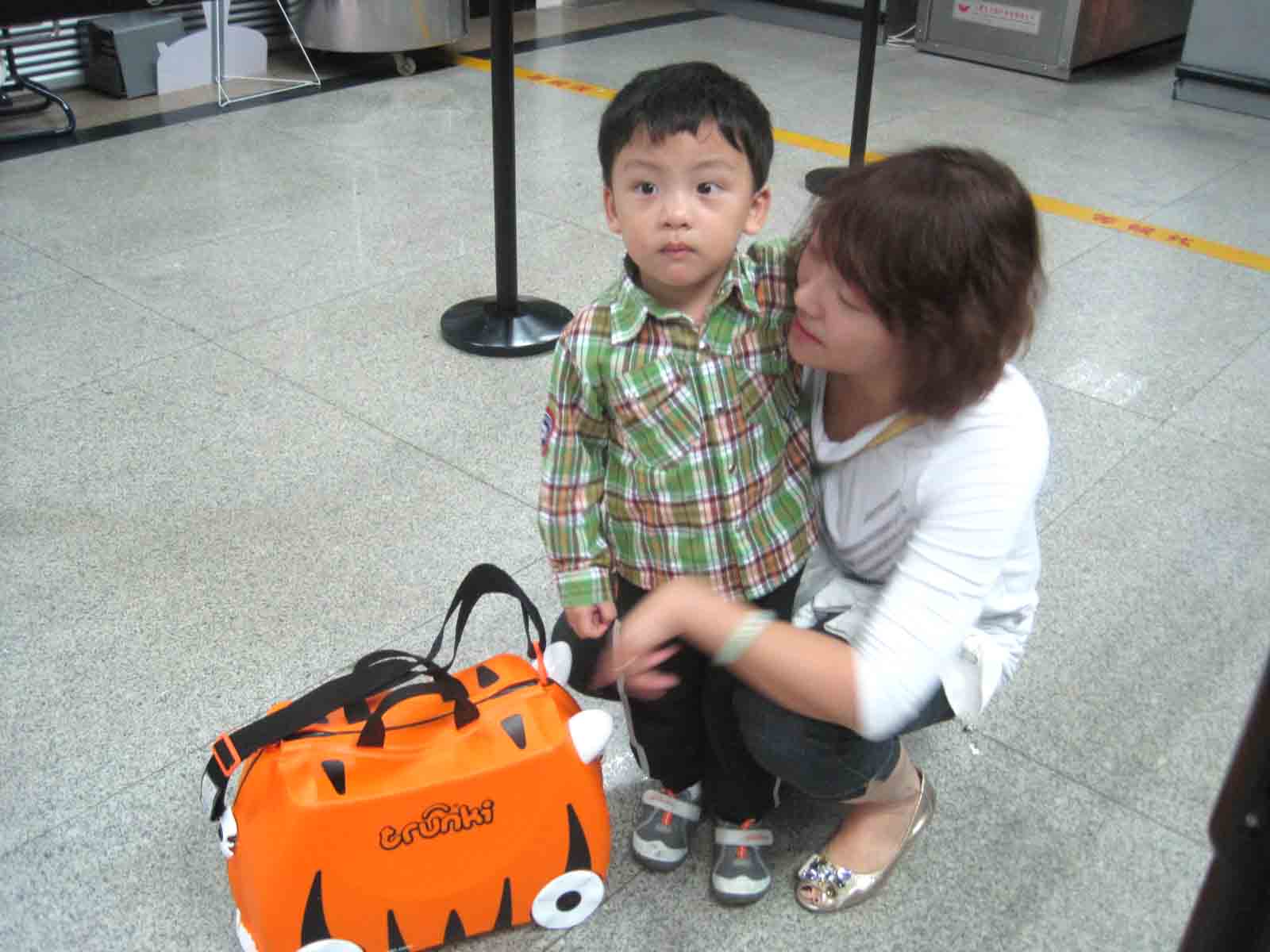Our 2010 China Tour Page 8
When we last saw Phil and Mary Ann they had completed their cruise down thr Yangtze from Ghongqin to Yiling. They are now on a bus to Wuhan. The next 3 pictures were taken from the bus window.



We were on the bus for 5 hours. We passed miles and miles of small peasant farms. I don't think I saw 1 piece of farm machinery. No tractors, harvesors, trucks, etc.. There were a lot of water buffalos and a few mopeds carrying stuff. Everythings was done using manual labor. Whew!! The homes were quite small, mostly made with mud bricks. Electricity was evident, so were TV dishes. This southeast part of china is their "bread basket". In the past, this land was captured by different dynastic conquerers in order to feed their armies.

We arrived in Wuhan quite late. There was a massive traffic jam at an elevated roadway construction site. We crashed in a hotel, got up early the next morning (day 19), ate breakfast and headed to the airport. At the Wuhan airport, we met this little guy. I don't think he'd seen many "Big Noses" (Westerners) before. He stared at each one of us, expression-less, the whole time we were in line. (Note his little "Trucki" tiger suitcase.)

Here is a map of the Hong Kong Special Admistrative Region. The big brand new airport where we landed is on Lantau Island (on the left). A bus met us and drove us on the Airport Expressway through Kowloon (a penninsular), under Victoria Harbor to the island of Hong Kong. The actual city of Hong Kong is the little squared off area on the map above the word "HONG KONG". We visited Kowloon , Aberdeen Harbor, and Stanley. Those last two names are carry-overs from the era of British rule of Hong Kong.

Our first view of Hong Kong is this massive container port. Until Shanghai eclipsed them, it was the worlds largest. Can you imagine all this stuff being shipped to the USA destined for Wal Mart?
Our second view of Hong Kong, after coming out of the tunnel from Kowloon, is the huge area of sky scrapers: Condos, hotels, apartments, and offices. The city of Hong Kong occupys a small area of the island of Hong Kong. There is a flat waterfront area and then everything is built on hills (like San Fransisco). 
We stayed in the Traders Hotel in the center of the picture.


The hotel was conveniently located on busy Queens Road next to a McDonalds. The food there was quite similar in quality and price to the US. This is our nice room. Mary Ann liked to look out the window at the laundry hanging outside the apartments across the stree. Some fun, ay?

Surprisingly, not too far from downtown there areas of woods and beaches - like above. One of the 3 annual "National Day Golden Weeks" begins on October 1 (the day we arrived in Hong Kong).


We found out just how busy things were when we went to the town of Stanley on the southeastern end of Hong Kong island.
Stanley is the home of the Stanley Market: A huge outdoor flea market on the waterfront. It was jammed with people, but a lot of fun to see all the stuff for sale. Mostly tee shirts and cheap jewelry, but occsionally some interesting "art" stuff.Note that there were a few westerners in the crowd.

Stanley has a nice pedestrian waterfront. It's filled with shops and outdoor cafes. We ate lunch here. I had a New Zealand beef burger. It was delicious. Mary Ann had a hot dok that was just OK...

Chinese don't have big weddings like in the US. However, they can still get wedding pictures taken in rented gowns and suits. This couple has just completed a shoot". After visiting Stanley, Mary Ann and I caught a bus back to our hotel in down town Hong Kong and called it a day.
The next day (day 20), we toured Hong Kong. We started the tour on foot by taking a series of covered escalators to the waterfront. It takes 6 separate escalators to go all the way down. In the evening they are reversed and go up to take people home from work.
In the narrow streets near the waterfront are numerous small shops - mostly meat, fruit, and vegetable food shops. You could buy most anything here.
One final picture: This guy was cutting up a fresh pig. Look at that cleaver. I bet there aren't a lot of pig part pinchers near here!
The double deck electric trams go back and forth along the waterfront for several miles. They were clangy, bangy, and bouncy, but fun to ride.




We'll continue for 1 more page of our tour of Hong Kong and our trip home. Stick with it, you're almost done!!
Go to Home
Go to P.2
Go to P.3
Go to P.4
Go to P.5
Go to P.6
Go to P.7
Go to P.9